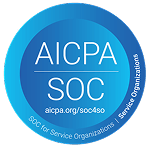Financial aid options for Indian students
Scholarships and grants
There are many grants and scholarships for Indian students; unlike student loans, they don’t have to be repaid. Scholarships and grants can come from universities, nonprofit organisations, government agencies, and private companies.
For example, the Fulbright Foreign Student Program provides funding for graduate students and young professionals to study and conduct research in the U.S., and MPOWER offers a variety of scholarships for Indian students.
You can search for scholarships and grant opportunities with databases like IEFA.org and Edupass.org.
Fellowships and assistantships
Fellowships and assistantships provide funding opportunities for graduate and doctoral students. These are often paid positions where students assist professors with research or teach undergraduate courses. Some fellowships specifically cater to international students.
For example, students at the Massachusetts Institute of Technology (MIT) can apply for the Josephine de Karman Fellowship, which provides up to US$25,000 (INR 20,85,000) in funding for students completing dissertations.
To explore fellowship opportunities, reach out to your university’s department head or financial aid office.
Student loans for Indian students
Federal student loans are only issued to U.S. citizens, permanent residents and eligible noncitizens. However, there are education loans for Indian students available from private lenders.
Many lenders require Indian students to have cosigners who are U.S. citizens or permanent residents to qualify for a loan. However, there are a few lenders – including MPOWER – that offer student loans for Indian students that don’t require cosigners.
Through MPOWER, you can borrow up to US$100,000 (INR 83,40,000) to finance your education, and you’ll only need to make interest-only payments while you’re in school and for six months after you graduate. After this six-month period ends, your outstanding balance will be amortised over the next 10 years, and monthly principal and interest payments will be due.
MPOWER has fixed interest rates, and you can qualify for a 0.25% discount by signing up for automatic payments.
Apply Now
Financing your studies in the U.S.
Although students are usually encouraged to fill out the FAFSA as soon as possible, that’s not the case for Indian students. If you aren’t a U.S. citizen, permanent resident or eligible noncitizen with a valid Social Security number, you cannot complete the FAFSA or qualify for federal financial aid.
Even though you can’t take out federal student loans, there are financial aid options for Indian students that can help you manage the cost of studying in the U.S. Scholarships, grants, fellowship opportunities and private student loans can all help you finance your education.
Research your options and contact your university’s financial aid office to find out what types of aid you may qualify for as an international student. If you’re ready to apply for a loan, you can start the process online.
 1. Can Indian students get government financial aid in the U.S.?
1. Can Indian students get government financial aid in the U.S.? 2. What are the best scholarships for Indian students studying abroad?
2. What are the best scholarships for Indian students studying abroad? 3. Can Indian students get student loans without a cosigner?
3. Can Indian students get student loans without a cosigner? 4. What are the eligibility requirements for private student loans?
4. What are the eligibility requirements for private student loans? 5. How can I reduce my study abroad costs?
5. How can I reduce my study abroad costs?